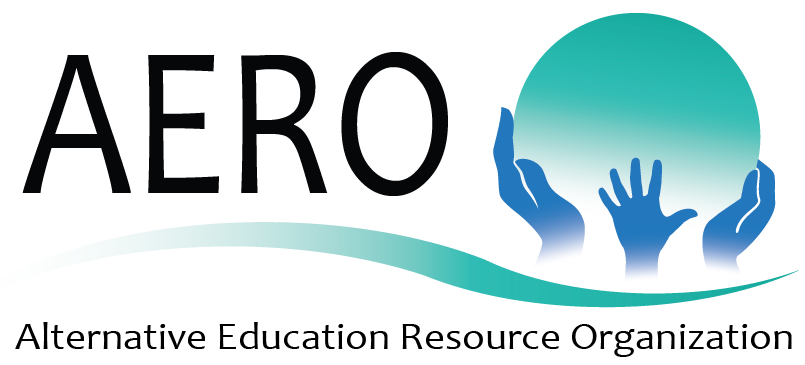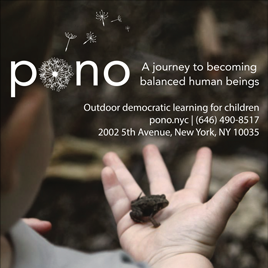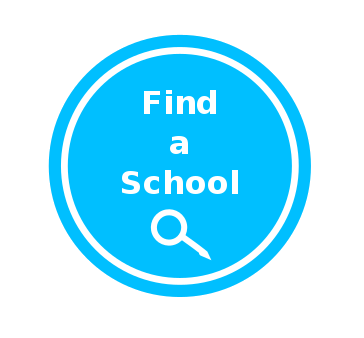Emergence:
A new, enlightened Philosophy of Education
 Raymond H. Hartjen, PhD, author
Raymond H. Hartjen, PhD, author
Empowering the Child: Nurturing the Hungry Mind
August 7, 2014
(reprinted from educationfutures.org)
I have been wrestling with the implications of the word ‘emergence’ as a root word for defining a new philosophy of education. The term ‘emergence’ is the outgrowth of the computer industry’s attempt to mimic human intelligence. I first came across the term in my reading of Complexity by M. Mitchell Waldrop where he covered some of the latest thinking in the realm of artificial intelligence. (1) In that context the term emergence is used in association with the surprise outcome of a computer routine where elements of a program join together in an unanticipated way. Emergence is often characterized by the arrival of an unexpected or unplanned outcome.
In the world of artificial intelligence (AI), there is a condition that must be in place for emergence to occur. It does not occur in settings where programmers program every step taken for the sought after outcome to occur. Instead a technique that is called “bottom up” programming is employed where the broadest elements of the outcome are identified as input for the program. The parallel in education is through identification of the least restrictive elements that enable a student to become self-directed.
Emergence in education is the act of labeling, bringing into conscience, the unexpected growth-spurt, the leap ahead, of a child’s behavior that exceeds normal expectations. By labeling this unexpected behavior emergence, we begin to recognize the need for setting parameters that foster freedom for exploring self-directed behavior and supporting the natural inquiry skills of children.
In my book, Empowering the Child: Nurturing he Hungry Mind(2). I first outlined the concept of emergence as it is defined in artificial intelligence and applied these concepts to the elements underlying the education of our youth in a self-directed learning environment. One of my most arresting insights came from a description of computer-generated birds in Waldrop’s book, which I outline here.
In Complexity (1), Waldrop describes a workshop that took place in Los Alamos, New Mexico, back in 1987. The theme was artificial life, and Craig Reynolds, an expert in computer animation, presented a program he had developed in which simulated birds learned to fly in formation. To do this, Reynolds wrote the simplest program possible, containing only three rules. He instructed his animated birds (dubbed boids) to: (1) maintain a discreet distance from all other objects, (2) try to match the speed of nearby boids, and (3) continually migrate toward the densest areas of boid population. Reynolds turned his boids loose within a computer-generated obstacle course. Obedient to his rules, they soon organized from random patterns into a well-defined flock. Moreover, they maintained this formation even as they avoided the objects that they encountered. This was remarkable because the programmer’s instructions never addressed the behavior of flocks, but only the behavior of individual boids. Their ability to form and maintain their flight pattern was not defined by the program it emerged from it. In other words, those three parameters were sufficient for the boids to learn to do this task on their own, without additional instructions.
Reynolds’ computer simulation uses a bottom-up approach to programming. Conversely, a traditional top-down program contains thousands of individual statements that define exactly what will happen under any possible circumstance. Bottom-up programming simply creates broad parameters from which the desired outcome can emerge. Bottom-up programming is faster, ties up less memory in the computer, and still contains all the necessary information for success. Whenever emergence occurs it draws great attention and applause because of its unexpected nature. The true value of this approach comes from thoughtful analysis of the elements that enable emergence to occur.
Similarly, our goal as educators is to create an environment that fosters and supports emergent behaviors in our children. This can only be achieved by immersing students in an environment that is defined by the broadest unrestrictive parameters that become enablers for self-directed explorations. A quote from Waldrop’s book reiterates the need for a bottom-up approach, “Instead of writing global, top-down specifications for how the flock should behave, or telling his creatures to follow the lead of one Boss Boid, Reynolds had used only three simple rules of local boid-to-boid interaction. And it was precisely that locality that allowed his flock to adapt to changing conditions so organically.” (1) Using the AI metaphor as an argument for tossing out a traditional top-down model in education would be, for many, a long stretch, but the experience of democratic education fully supports change in this direction. In traditional US public education settings we have been programming students from the top down for years. Many of our schools continue to feed everyone the same rigid set of data. This produces students who function on the most literal level. They are taught to memorize reams of information, but they are never given a framework for solving their own problems. The first obstacle that appears in their paths is likely to knock them down. Alternatively, if you give students a few guidelines to build on from the bottom up, then suddenly you free them to explore on their own. They emerge as learners with a skill they will draw upon for the rest of their lives.
A statement from Waldrop’s Complexity further supports this proposition: “…since it is effectively impossible to cover every conceivable situation, top-down systems are forever running into combinations of events they don’t know how to handle. [emphasis added] They tend to be touchy and fragile, and they all too often grind to a halt in a dither of indecision.” (1) This in essence speaks to the very limited outcomes of traditional education which comes about simply because there is an effort through the rigid structure of curriculum to cover all leaving little opportunity for a student to explore on his own.
Believing that children can only realize their full potential in a bottom-up educational setting, I began to contemplate the fewest parameters that could be used to define such a progressive classroom. I initially came up with four simple rules that I believe could serve as the basis for all elementary education and possibly for life itself:
Rule 1: Support the establishment of long-term attending skills in young children. (Chapter 5, Empowering the Child)
The ability to focus on a task for an extended period is crucial to any child’s development. This skill will be a valuable asset, not only during the school years, but throughout the child’s life. By providing guidance and modeling, teachers and older students help the child choose a task and learn to stick with it.
Rule 2: Support, focus and shape self-initiating behaviors in young children. (Chapter 6, Empowering the Child)
Self-initiation is another key to being successful in life, yet traditional schools do not allow this talent to emerge. When children leave school and begin to function as adults, their success depends on their ability to take the initiative in everything they do, from finding work to building a relationship. Nothing is accomplished in the self-initiated learning environment without the student making it happen. To lay the foundation for this success, the progressive classroom must encourage and support all aspects of self-initiated behavior.
Rule 3: Enable students to become fluent in all forms of thinking skills through daily use and practice. (Chapter 7, Empowering the Child)
The honing and refinement of thinking skills lies at the very heart of this free micro-society. Both thinking and negotiating skills are essential to self-initiated learning. Much contemporary research focuses on thinking skills in the classroom. We need to develop a means for applying these findings in the progressive educational setting.
Rule 4: Enable students to explore varied avenues of creativity and encourage them to develop proficiency in at least one. (Chapter 8, Empowering the Child)
In his book The Sane Society, Erich Fromm contends that a tension exists within all of us between creativeness and destructiveness. By encouraging students to explore their innate creative potential, we help them to master dormant destructive tendencies. This, in turn, minimizes behavioral problems and promotes constructive activity.(3)
In the years since writing this, I have come to realize that there is a fifth rule underlying a child’s success in life: well-honed social skills. One needs only to read chapter 4, Life Coping Skills/School as Community with this in mind to understand the importance of social skills in life.
Rule 5: Support the establishment of well-honed social skills in young children. (Chapter 4, Empowering the Child)
The social-cultural environment, a limited democracy where students learn to harmoniously interact, hour by hour, day by day, becomes the community where self-initiated learning flourishes. I have come to feel so strongly about the importance of social skill development that I have written a paper on the subject, “The Preeminent Intelligence – Social IQ”. (4)
These five basic rules will empower students to open their own doors of educational opportunity. To be effective, they must be accompanied by environmental changes designed to support student’s natural inquisitiveness. The critical question for a philosophy of education to ask is, What are the elements that enable a child to enter a state where he/she demonstrates an emergent growth in behavior? To create such an education setting we must become consciously aware of what truly underlies the act of self-directed learning. While I have identified five elements (outlined above), I need to add to the list the importance of ‘hanging out’ which is the time during the school day when students gather to discuss and explore their views in the company of their friends. Without this additional element, the very act of a child’s gaining self-confidence through active participation group dialogue, the whole personal growth experience fails to reach fruition. I discuss this in greater detail in my paper titled, “Hanging Out as a Means of Becoming a Fearless Communicator.”(4)
Recognizing that most parents in the United States have been educated in traditional settings, an added benefit of identifying the elements underlying an effective self-directed learning environment is to provide our parents with a “hook to hang their hat upon” when it comes to understanding an educational philosophy based on the concept of emergence. A newly developing philosophy of education enables us to provide parents and other educators with a list of elements that are critical minimum components of an effective self-directed learning environment. The philosophy of emergence in education becomes a justification for providing an exploratory environment for a child’s growth and development.
This paper is only the beginning of a conversation that seeks input from many. If this presentation compliments your reflection on improving our definition of alternative education. please add your thoughts on how it may be expanded. I welcome your input as I explore this emergent educational philosophy.
Notes:
1. Waldrop, M. Mitchell, Complexity, New York, Simon and Schuster, 1992
2. Hartjen, Raymond H., Empowering the Child: Nurturing the Hungry Mind, Maryland, Alternative Education Press, 1994
3 Fromm, Eric. The Sane Society. New York: Henry Holt and Co., Inc. (1990)
4. RHH web site: www:/Educationfutures.org
See origianl article here.

















